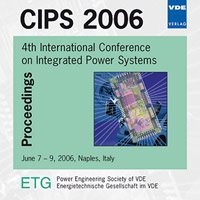Predicting the Crack Progression in PbSnAg-Solder Under Cyclic Loading
Conference: CIPS 2006 - 4th International Conference on Integrated Power Systems
06/07/2006 - 06/09/2006 at Naples, Italy
Proceedings: CIPS 2006
Pages: 6Language: englishTyp: PDF
Personal VDE Members are entitled to a 10% discount on this title
Authors:
Ramminger, Siegfried (Siemens AG, Corporate Technology Department, Munich)
Wachutka, Gerhard (Institute for Physics of Electrotechnology, Munich University of Technology)
Abstract:
The aim in manufacturing electronic devices is to develop technologies for packaging that can withstand elevated ambient temperatures in automotive applications. Future products must satisfy ever more stringent requirements in terms of cost-effectiveness, performance and reliability. The optimization of design and packaging technology for temperatures above 150deg C represents a great challenge for development engineers. The topic complex covers reliability and the prediction of service life. Thermo-mechanical stability is examined on the basis of the layout of the components. The test prototypes fabricated for thin films rarely model the relationships of the original specimen correctly and allow conclusions to be drawn that apply to the latter. During real operation, the points of interest in such a component are also usually completely inaccessible to any measurement method or perturb the operation of the component, so that simulation calculations are the only way of correctly predicting material stresses. Abrupt material transitions in thin films tend to fracture, while plastic or creeping embedded layers tend to fatigue in response to temperature stresses and thermal mismatch of the coefficients of expansion. This means that weak points in particular must already be excluded as early as the development phase. The mechanical stress is analyzed and possible fracture points identified. The real thermo-mechanical stresses are calculated for this purpose by means of finite element simulation. Suitable parameters were selected for the fatigue modeling and the damage was evaluated by means of service-life models. The simulation takes into account non-linear material behavior such as temperature-dependent plastic behavior and viscoplasticity. A model containing the speed of crack formation in a cyclically stressed PbSnAg solder as a function of the parameter causing the damage, such as the energy dissipated per cycle, will ultimately be specified.


